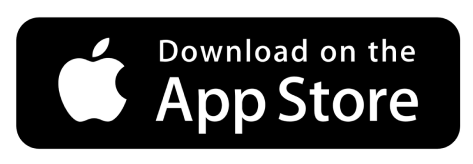- Effortless Communication: Reliable Digital
- landline with Crystal Clear Calls and Advanced Features.

Why Digital Literacy Is a Workplace Must-Have — and How to Build Your Digital Confidence!
You walk into your office on a Monday, and your manager asks you to update a shared report using a new cloud-based tool. Your eyes blink. You’ve never used it before. Your heart races because the deadline is tight. What do you do?
If you’re like many, this scenario feels all too real. Digital literacy isn’t just a buzzword anymore. It’s a workplace non-negotiable policy to integrate into your daily work.
Why digital skills now sit at the heart of every workplace — and how you can build the confidence to keep the best practice in definitive, adept actions in this fast-changing digital world.
The Digital World is Our World — No Exceptions!

Think back two decades ago. Smartphones, Wi-Fi gadgets and equipment, smart gadgets, remote monitoring devices, and so on, have been added to the list. Over a period of many years, digital upgradation has gained its momentum – the excitement is real and set to increase. Digital efficiencies have been introduced into most aspects of life, producing greater human capacities.
The intrinsic growth of digital-native generations has yielded benefits across the workplace and personal life. Its inherent characteristics slowly redefine organisational behaviour, culture, and the personification of technical tools as we know them, and induce changes in our subconscious minds in the context of everyday life.
Older generations are less tech-savvy and must actively seek to learn inclusive technology!
Older employees are more likely to feel tech shame or embarrassment when facing any technical issues compared to younger employees.
“Digital literacy is the ability to adapt to the latest tools; digital competence makes it easier to effectively bridge efficiency in the workplace.”
An extremely low degree of digital literacy is a serious threat to society and a major disadvantage for an overwhelming number of the global population.
Our lives are highly reliant on a technology-driven society and are influenced in every aspect of our daily lives. Its influence is such that some nations have citizens with smartphones, but don’t have access to clean drinking water.
Certainly, digital technologies have now had prop up many positive impact on every aspect of human life and work. In addition to learning in-demand digital skills, everyone must seek to adapt to essential IT tools used in modern business.
Moving to the present time, the occupational structure has changed. Employees now increasingly look to work from home or inclusive remote working hours that inspire greater flexible working arrangements for work execution, all these thanks to advanced technology, the pace of globalisation, and shrinking workplace mobility.
Working from home meant dialling into a corporate modem lounge. At this point, almost every facet of life and work runs on communication and collaboration tools. From ordering your morning brew via an app to using project management software at work, technology shapes how we get things done.
The pace of digital upgradation keeps accelerating our digital journey. New IT tools hit the market almost weekly, and they’re connected in ways that multiply their impact. This isn’t slowing down, either. It’s more like a snowball that keeps rolling faster downhill.
Millennials and Gen Z? Digital Natives. The Rest of Us? Digital Learners.

Gen Zers have the advantage. People born in the late 1990s are relentlessly exposed to digital technologies; they are called the first digital natives, and they adapt new tech easily— sometimes without even thinking about it. Compared to older workers, it takes a conscious effort to get up to speed and avoid getting sucked into it; they are well consciously aware of new tech gadgets. But here’s the truth: everyone can build digital literacy with the right support.
Think of digital skills like learning a new language. The more you practice, the better you get. You don’t have to be an IT whiz, but you do need to speak enough “digital” to get by — and even thrive.
What Is The Meaning Of Digital Literacy?
It’s more than just knowing how to send an email, read a document, or type a report. Meaning, it’s your ability to understand the digital tools we use in our daily lives.
In other terms, digital literacy means being able to use technology smartly to make daily tasks faster and smoother—in both work and life. It builds our basic level of competency to use digital tools to finish the job, how to find it, and how to pick it up quickly to communicate, being able to apply critical thinking skills, and securely accessing online tools, when new tech rolls out.
For example, imagine you’re asked to join a video call on Zoom, then switch to collaborating on a shared document in Microsoft Teams, and maybe share files when you’re out in the field using your smartphone. Being digitally literate means you can effectively access IT tools with applied skills to operate in a safe and responsive manner.
Why Is Digital Literacy So Important for Work?

Simply say: Today’s jobs rely on technology more than ever. A UK report in 2019 showed digital skills appeared in over 80% of advertised jobs. That number has been climbing, especially with more companies adopting hybrid and remote work models after the pandemic.
Employers expect employees to get their feet wet in new GenAI, which must be woven into the workplace by the use of technology strategically—whether that means hopping on your personal device or getting an enterprise app.
Building Your Digital Confidence: A Functional Approach!

Here’s the good news—you don’t have to grasp everything overnight. Digital confidence grows the best possible experience.
1..Start Small, Practice Often: If you dread using cloud drives or chat apps, set aside 10 minutes daily to explore. Open that shared folder, send a test message, or try scheduling a calendar invite.
2..Use Free Online Resources: Many platforms, like Coursera and LinkedIn Learning, offer beginner-friendly courses. Grab a coffee, pick one topic, and learn at your own pace.
3..Ask for Help—And Accept It: No one gets digital skills by sheer willpower alone. Ping a tech-savvy colleague or your IT support when stuck. Most folks are happy to lend a hand.
4..Stay Curious About New Tools: Treat new software like a puzzle rather than a chore. Exploring its features can turn frustration into fun.
5..Apply What You Learn: The best way to learn skills is to use them in your daily tasks. Maybe volunteer to manage a team’s shared document or organise meetings via video calls..
Real-Life Example: Jane’s Journey to Digital Confidence!
Jane, a 45-year-old project coordinator having 20 years of corporate experience in a UK construction firm, she mostly relies on emails and phone calls. When her company switched to a new project management tool, she felt overwhelmed. She took a breath and tackled the interactive change, and moved towards step by step.
She started watching short tutorial videos, practiced on dummy projects, and asked questions during team sessions. Within a couple of months, Jane went from confused to confident. She even helped newer employees get started. Now, she sees valued digital skills and is set into a new role at work, as a key part of her toolkit.
Why Digital Literacy Has Become a Workplace Must-Have — and How To Boost Your Digital Confidence?

Taking the example of Tom, a small business owner in Manchester. Last year, Tom relied mostly on in-person meetings and felt confident in paper invoices. But then, faced with the rise of remote work and online communication, Tom realised his team needed new digital skills. His staff struggled to use collaborative tools and used communication apps. Once the projects got delayed, the workplace frustration grew — and Tom knew it was time to act.
Tom’s story is becoming all too common across the UK. The age of digital upgradation has flown into an era of heavily used technology. Whether you run a small enterprise, work in healthcare, or manage a warehouse, digital literacy gives you a strong foundation in digital skills and keeps you innovative, keeps you safe online — it’s a vital tool to thrive and empowerment.
Why Is Digital Literacy Important? It’s More Than Just Clicking Around!
Digital literacy means having the know-how to operate and use digital tools effectively, no matter where you have been or how hectic life gets. This includes everything from real-time collaboration apps (like Microsoft Teams or Slack) to asynchronous (real-time interactive apps) tools such as project management platforms and secure video conferencing. Now that many workplaces are adopting hybrid or fully remote models, it gives you have the ability to switch between these platforms on an on-demand basis.
It’s a mindset, not just a set of skills. Employees now need to adapt quickly and confidently to new tools and learn how to use technology strategically. For example, it’s not just about using your work laptop but being able to safely connect over your mobile device, or connecting to a nearby wi-fi network, or understanding cybersecurity basics.
Digital Literacy Isn’t Just for Tech Jobs Anymore!
You may think digital skills only matter for IT professionals, but that’s old thinking. Take warehouse workers who now use cloud-based inventory systems, organisation board members meeting online with international clients, or doctors scheduling remote patient appointments – it’s now applicable everywhere. AI’s applications & implementations at the workplace are much more important to meet the growing demands of workplace efficiency.
Contractors manage projects through mobile collaboration apps while drivers track routes with GPS software. Digital technology is deeply woven into countless roles.
One data from the UK government confirms this shift. Back in 2019, over 80% of online job ads required digital skills, and the need keeps rising. The trend presents across the pond, too. A 2023 report by the National Skills Coalition and the Federal Reserve Bank of Atlanta shows more than 90% of US job listings ask for digital know-how.
Why Does Digital Literacy Matter?

Being digitally literate increases your chances of career success with plenty of real-world benefits:
- Work faster and smarter: Digital tools speed up tasks, close communication gaps, and improve teamwork.
- Securely manage sensitive information: In today’s cyberthreat landscape, knowing how to protect your data can save your business from significant risks.
- keeps you employable: With technology constantly growing, those who embrace it get ahead. Learning to pick up new tools quickly gives you and your employer a competitive edge.
Seth Robinson from CompTIA sums it up well: digital literacy means knowing how to safely access online resources, share information, and communicate through digital channels.
How Can Businesses Build a Digitally Confident Team?
Digital upskilling isn’t about flooding your staff with courses. It’s about understanding their current skills and tailoring support. At Zoiko Telecom, we see digital literacy as key for small and medium businesses. By offering secure VoIP business phone plans UK with encrypted fibre broadband deals UK, delivering speeds up to 1000 Mbps, we help businesses stay connected and confident.
Here’s a practical approach:
- Assess individual skills: Know where each team member stands. Design training from beginner basics to advanced digital security.
- Choose the right tools: Pick software that matches your team’s needs without overwhelming them.
- Provide ongoing support: Technology keeps evolving. Make help accessible when new challenges arise.
- Prioritise cybersecurity: A secure digital environment protects your business and builds trust.
Let’s Bring It Home — A Real-Life Example!
Meet Sarah, the office manager at a London charity, she runs small community groups. When the organisation moved to hybrid work, Sarah faced chaos with different platforms and device use.
She connected us to improve connection speeds because she often collaborates with other team members across the country, and offered training online, mostly during busy working hours. Now, her team runs meetings seamlessly from any location, spotting security vulnerabilities and tackling them head-on.
Sarah’s current experience shows us how digital literacy matters in everyday work life.
Final Thought!
Digital literacy means how effectively we incorporate technologies in our daily life, which leads to another dimension of how we work, communicate, and protect ourselves in a highly vulnerable online world. It’s a skill set and mindset that no one can afford to ignore.
Whether you’re a CEO or an apprentice, a doctor or a cab driver, a simple delivery boy or a warehouse manager, building digital confidence will help you use the fast-paced tech world — turning digital hindrances into embracing it.
Taking a reference from an old saying, “If you don’t ride the wave, you’ll get left behind.” So, start learning that digital wave now to optimise organisational productivity and keep turning obstacles into diversified market shifts.




